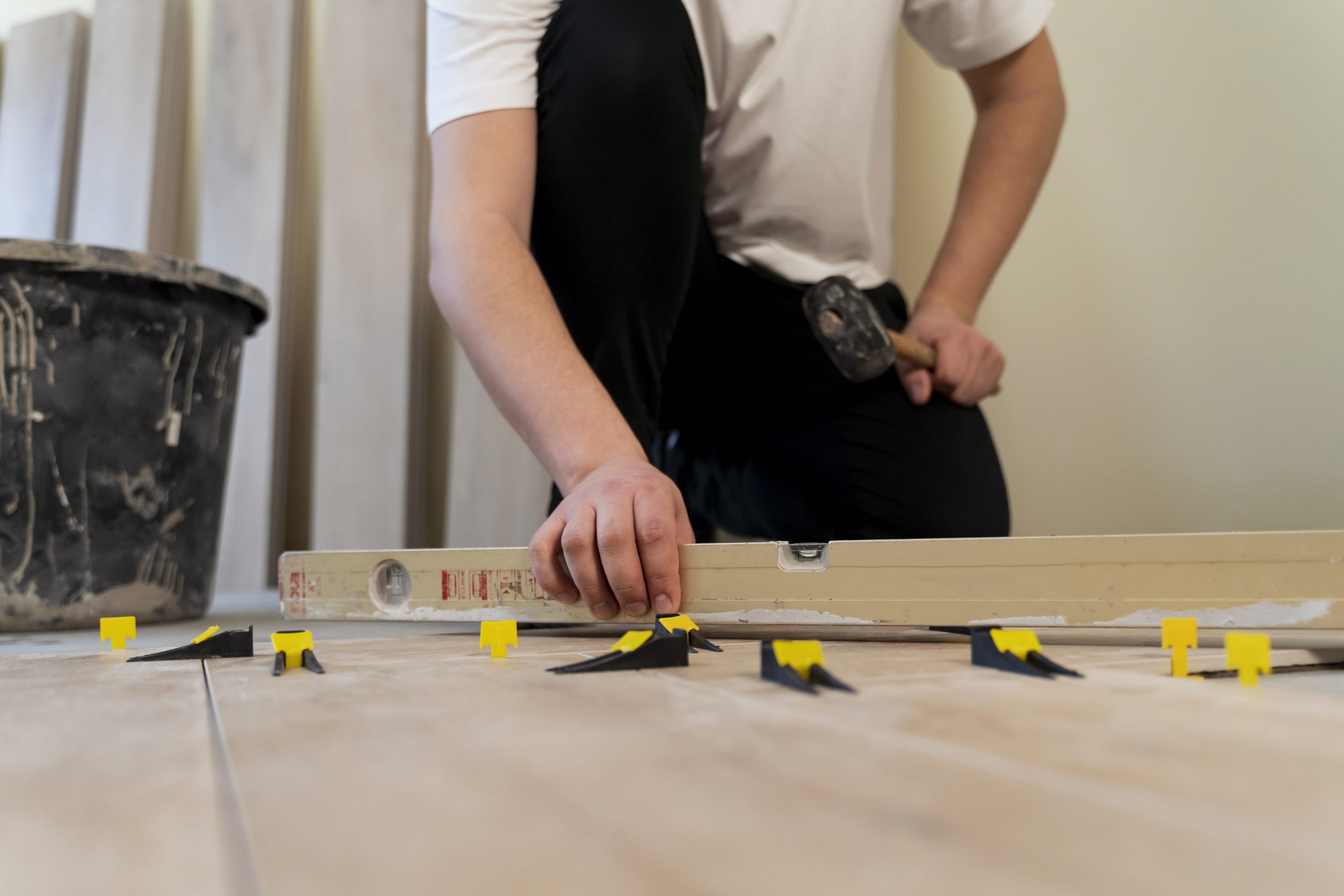"Step into a world of exceptional craftsmanship with our flooring services. Proudly serving Chicago and its surrounding suburban areas in Illinois, we specialize in transforming homes with precision and style. From luxurious hardwood to versatile tile, our expert team delivers unparalleled results tailored to your vision. Trust us to elevate your space with enduring beauty and quality craftsmanship, one step at a time."
Flooring Services

Types of Flooring Materials:
1. Hardwood Flooring:
o Advantages:
▪ Timeless and elegant appearance that adds value to the property.
▪ Durable and long-lasting, with proper maintenance.
▪ Can be refinished multiple times to restore its original beauty.
o Disadvantages:
▪ More expensive upfront cost compared to other flooring options.
▪ Susceptible to scratches and dents, especially in high-traffic areas.
▪ Not recommended for areas prone to moisture, such as bathrooms and basements.
2. Laminate Flooring:
o Advantages:
▪ Cost-effective alternative to hardwood, with a similar appearance.
▪ Resistant to scratches, stains, and fading.
▪ Easy to install, often available in click-and-lock systems.
o Disadvantages:
▪ Not as durable as hardwood, may need replacement sooner.
▪ Cannot be refinished like hardwood flooring.
▪ Susceptible to water damage if not properly sealed along seams and edges.
3. Vinyl Flooring:
o Advantages:
▪ Wide range of styles and designs, including wood and stone looks.
▪ Waterproof and highly resistant to moisture, making it suitable for kitchens and bathrooms.
▪ Durable and easy to maintain, with simple cleaning routines.
o Disadvantages:
▪ Can emit volatile organic compounds (VOCs) during installation.
▪ Prone to scratching and denting if heavy objects are dragged across the surface.
▪ Susceptible to fading and discoloration over time, especially in direct sunlight.
4. Tile Flooring (Ceramic or Porcelain):
o Advantages:
▪ Extremely durable and long-lasting, with proper installation.
▪ Resistant to scratches, stains, and moisture, making it ideal for high-traffic areas.
▪ Wide range of colors, patterns, and sizes to choose from.
o Disadvantages:
▪ Cold and hard underfoot, may not be suitable for all living areas.
▪ Grout lines require regular cleaning and maintenance to prevent staining.
▪ Professional installation may be required for complex patterns and designs.
Application Methods:
1. Nail-Down Installation:
o Advantages:
▪ Provides a secure and stable flooring surface, particularly for hardwood floors.
▪ Suitable for both plywood and concrete subfloors.
o Disadvantages:
▪ Requires specialized equipment and skills for proper installation.
▪ Can be time-consuming and labor-intensive, especially for larger areas.
▪ May not be suitable for all types of flooring materials.
2. Floating Installation:
o Advantages:
▪ Quick and easy installation, often suitable for DIY projects.
▪ Allows for expansion and contraction of flooring materials, reducing the risk of warping or buckling.
o Disadvantages:
▪ Less stable than other installation methods, particularly for heavier materials like hardwood.
▪ Limited compatibility with certain flooring types and subfloor materials.
▪ May require additional underlayment for soundproofing and moisture protection.
3. Glue-Down Installation:
o Advantages:
▪ Provides a strong and permanent bond between the flooring material and subfloor.
▪ Suitable for a wide range of flooring types, including hardwood, vinyl, and tile.
o Disadvantages:
▪ Requires proper surface preparation to ensure adhesion and prevent issues like delamination.
▪ Difficult to remove and replace flooring materials once glued down.
▪ May emit strong odors and fumes during installation, requiring adequate ventilation.
4. Grout Installation (for Tile Flooring):
o Advantages:
▪ Provides a secure and stable base for tile flooring, preventing movement and cracking.
▪ Enhances the appearance of tile by filling in gaps and creating a seamless surface.
o Disadvantages:
▪ Requires careful application and cleanup to avoid staining and unevenness.
▪ Regular maintenance is necessary to prevent grout discoloration and deterioration.
▪ May crack or chip over time, particularly in areas with heavy foot traffic or structural movement.